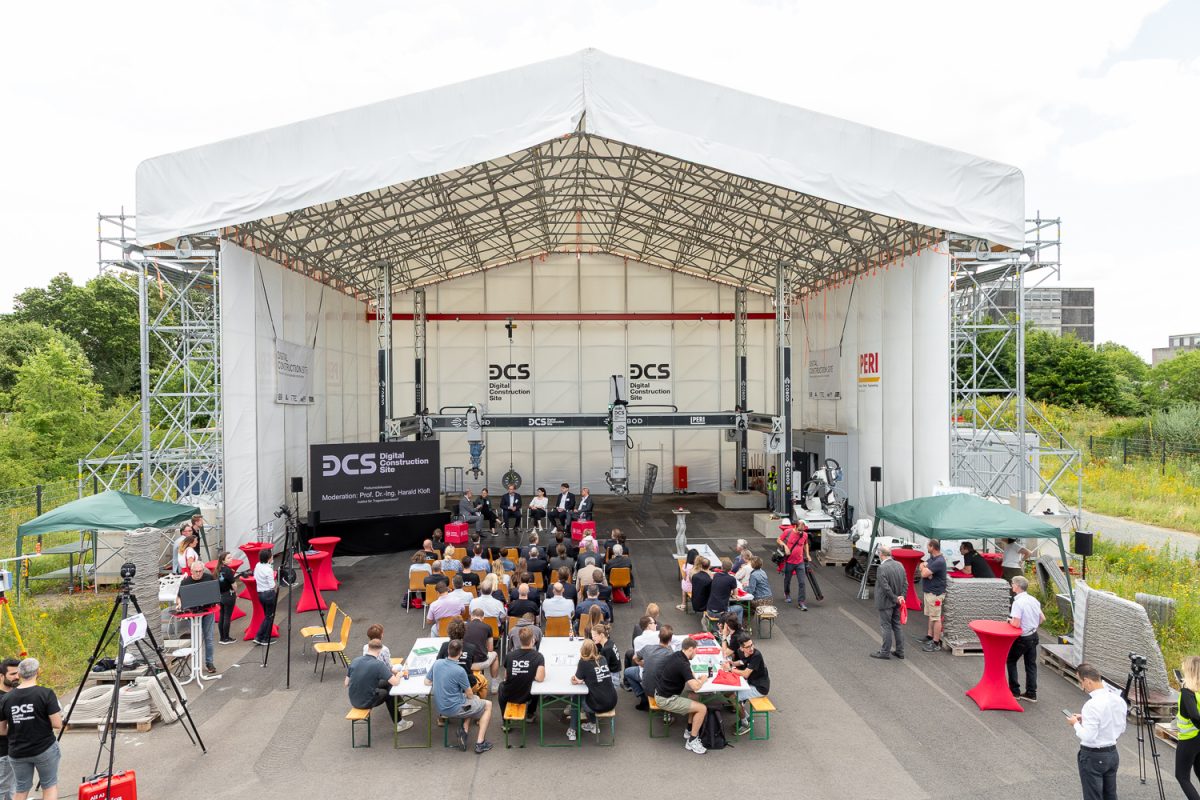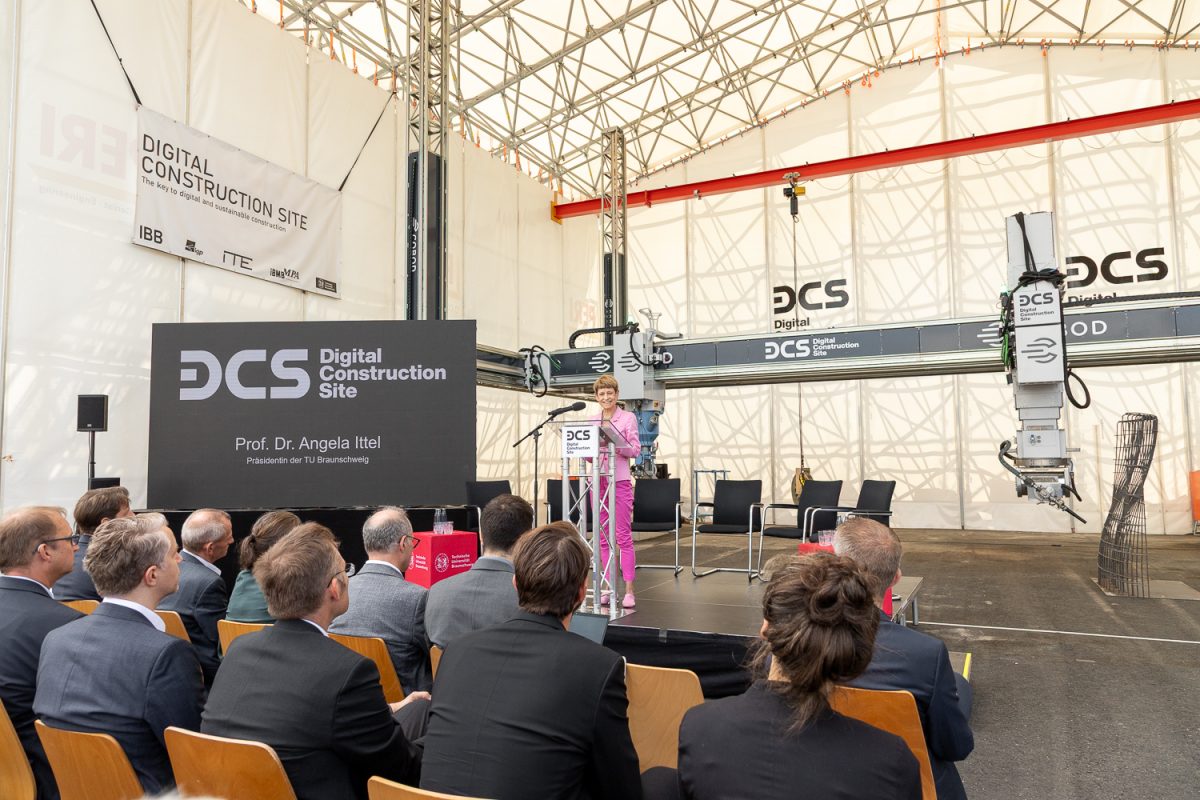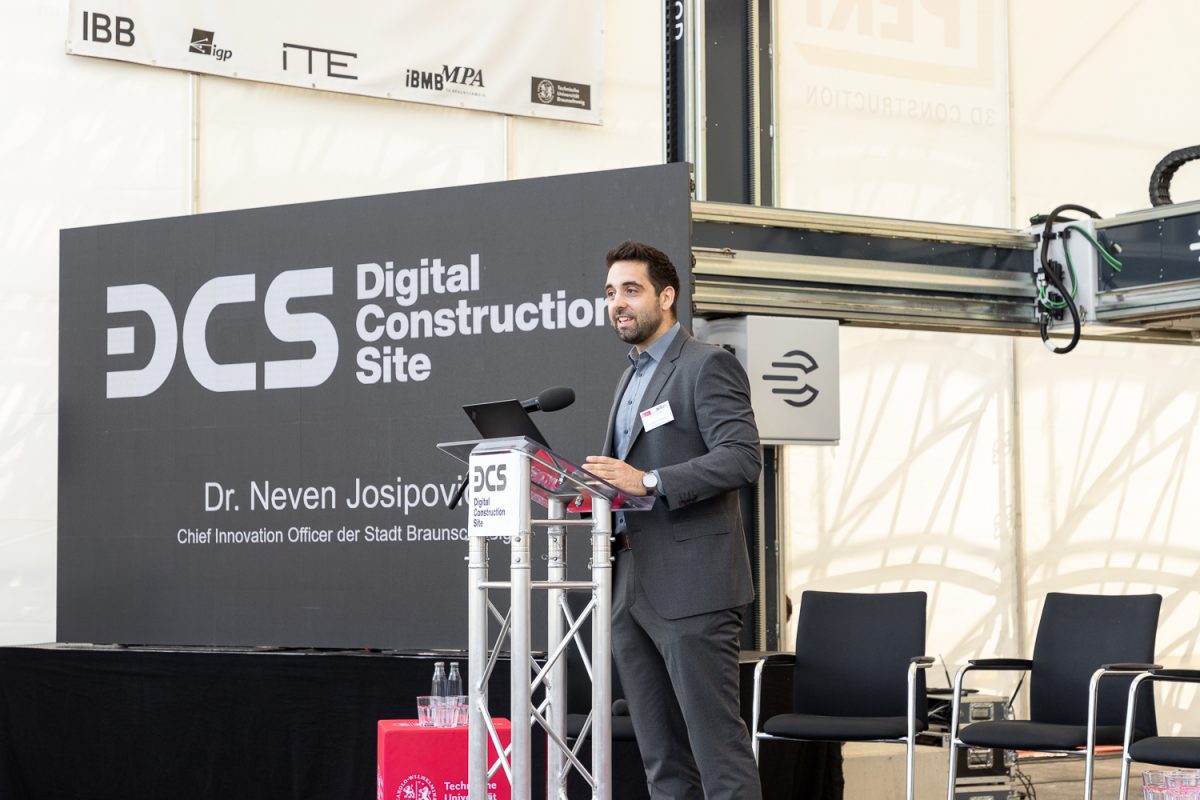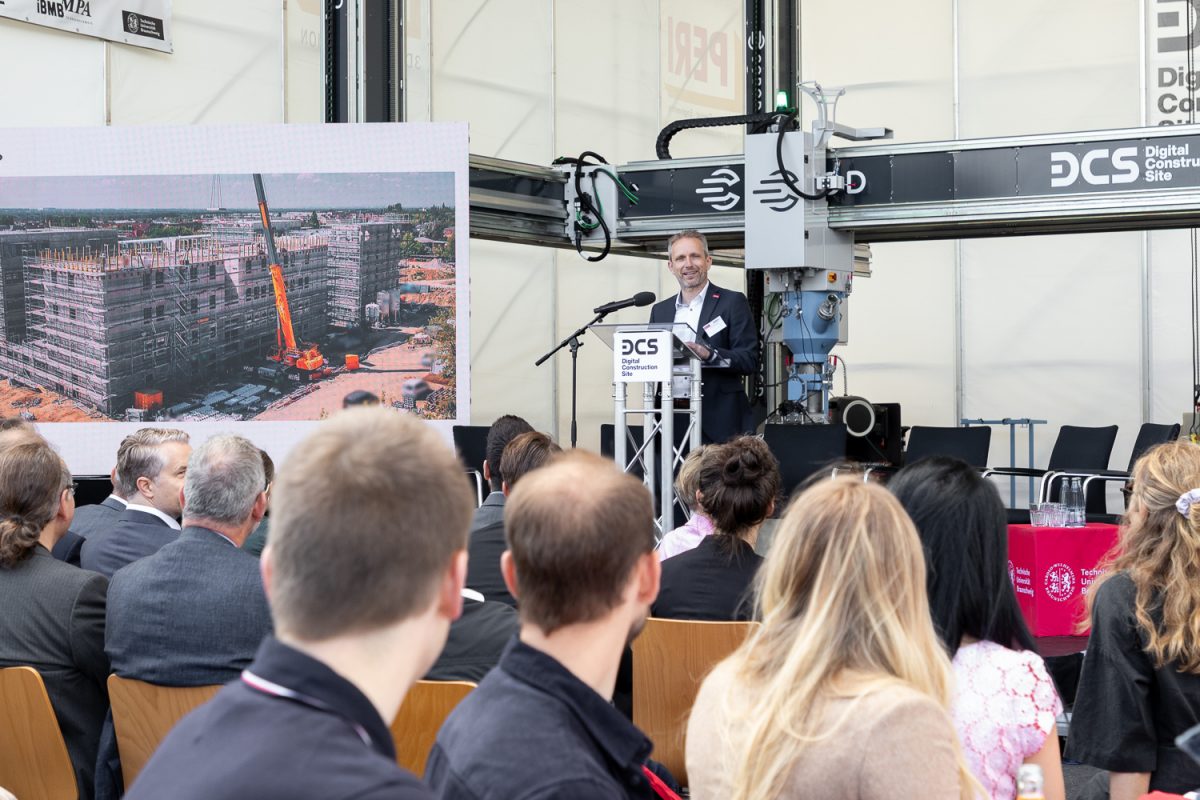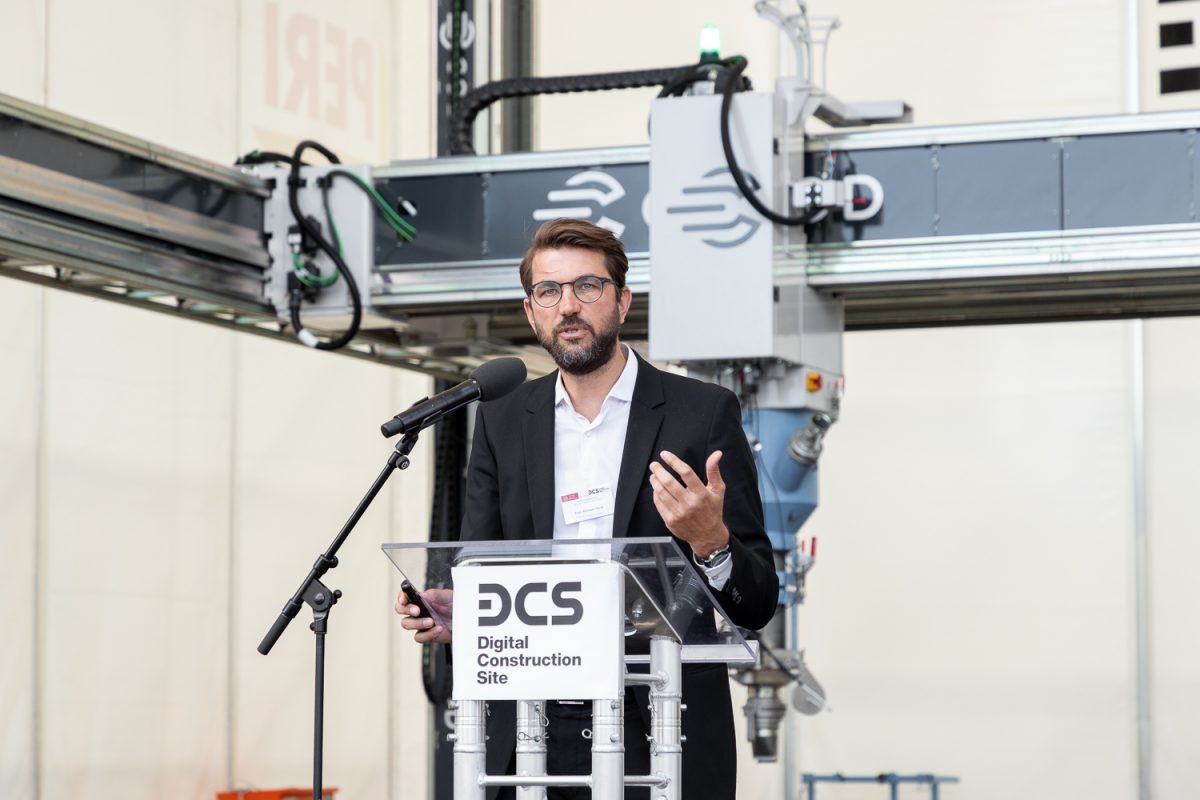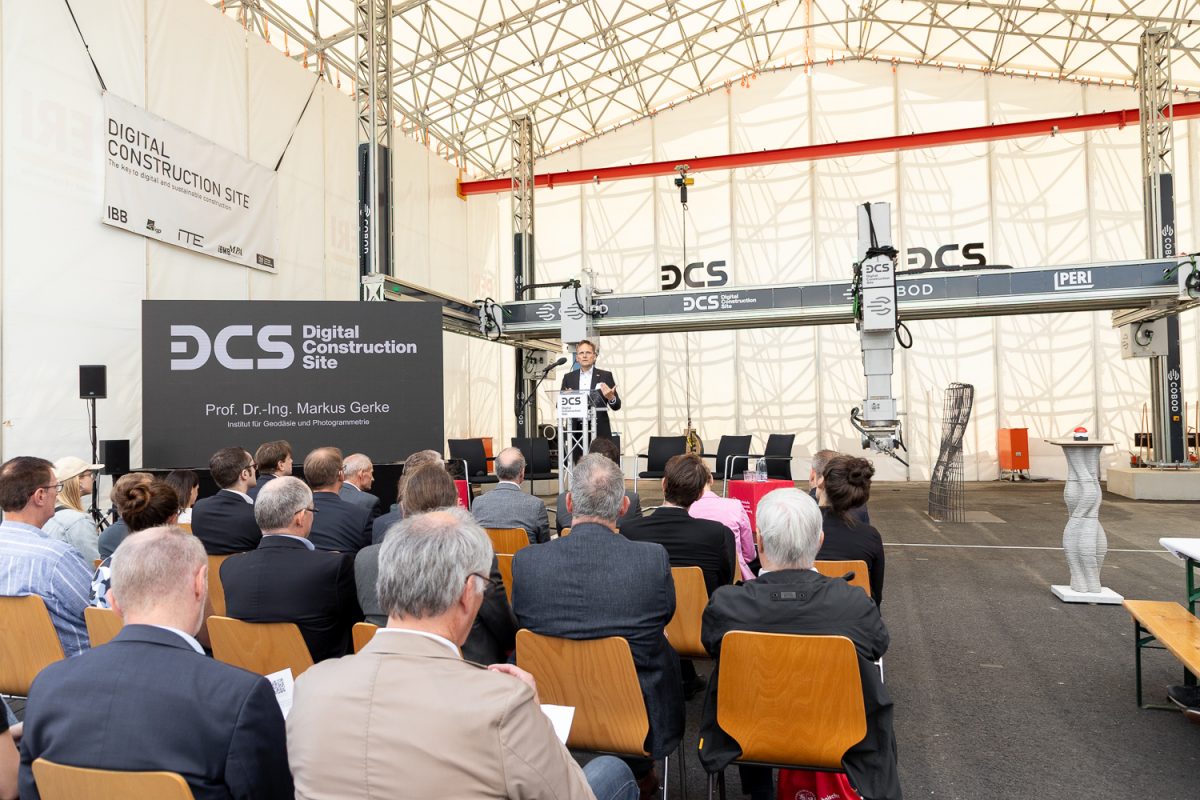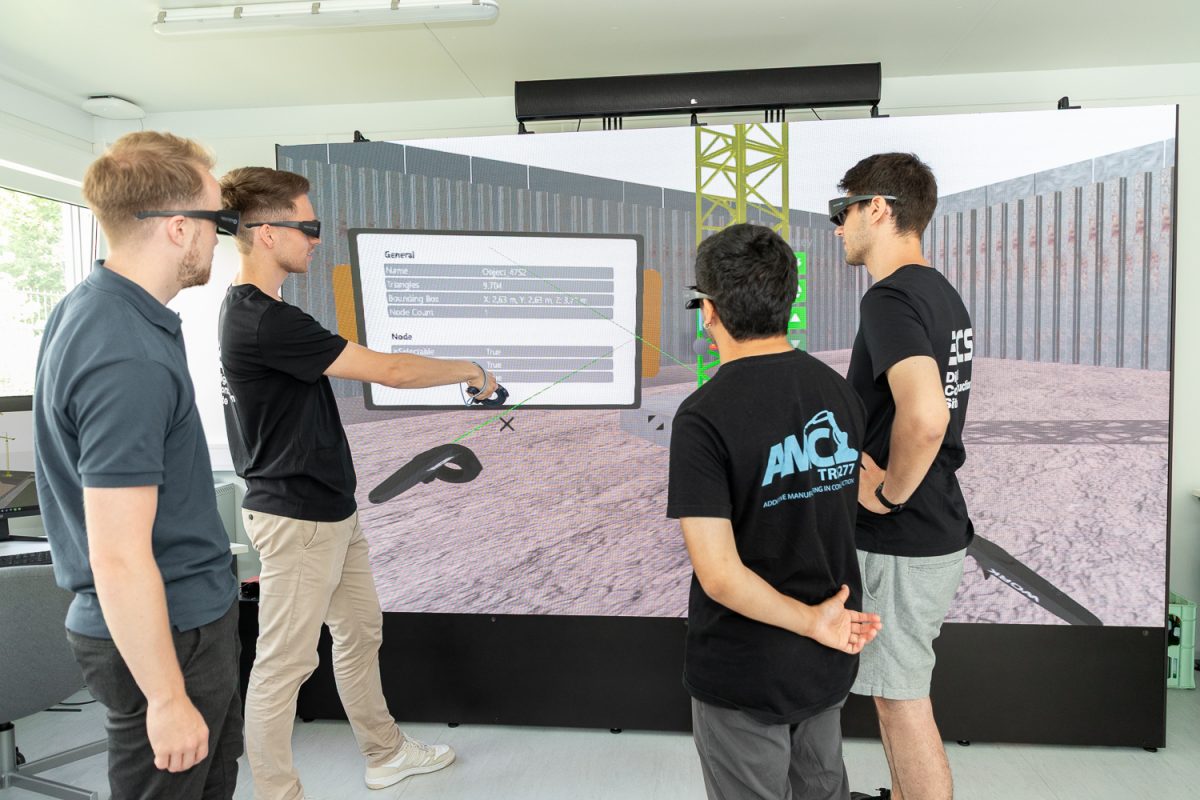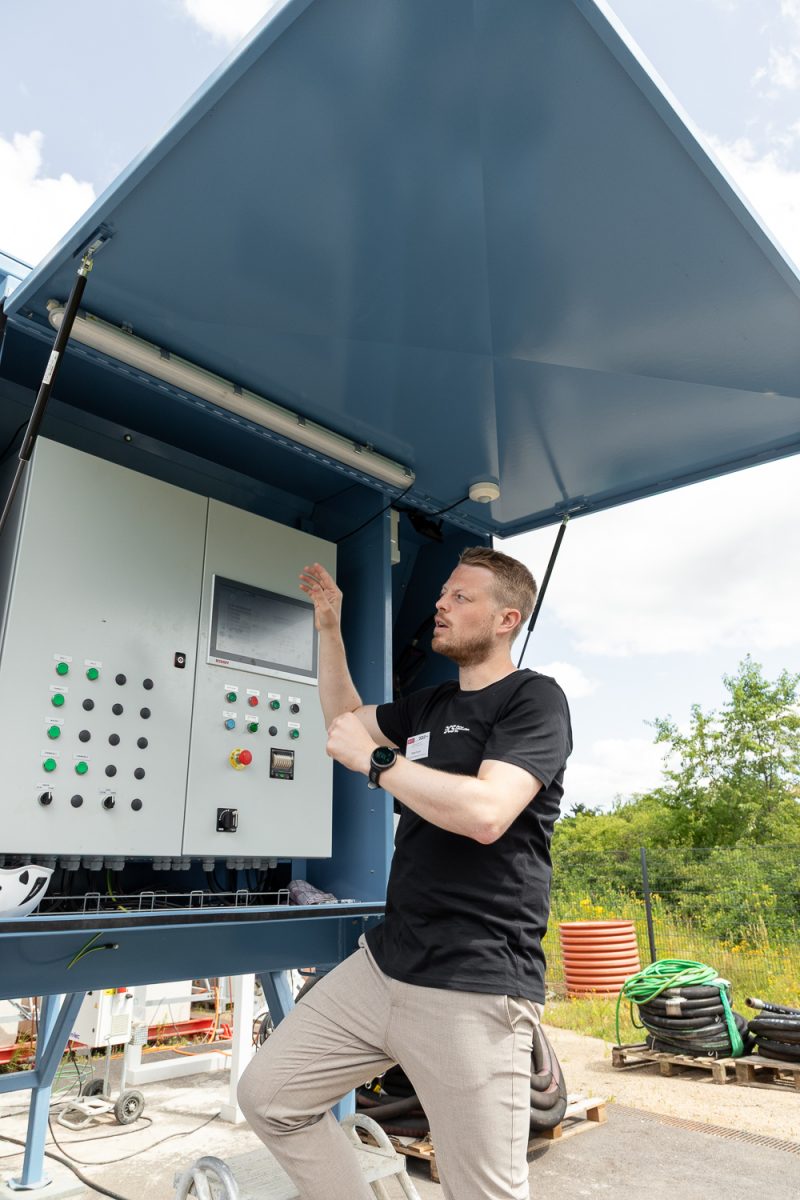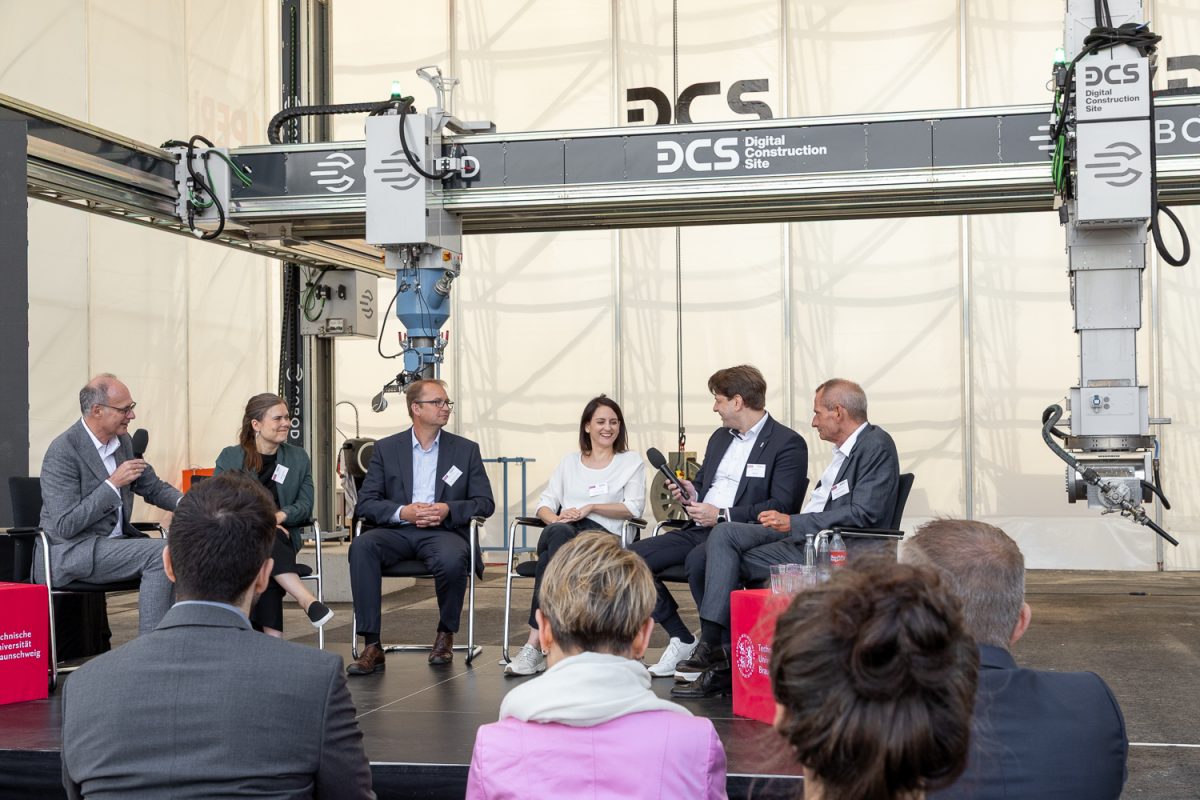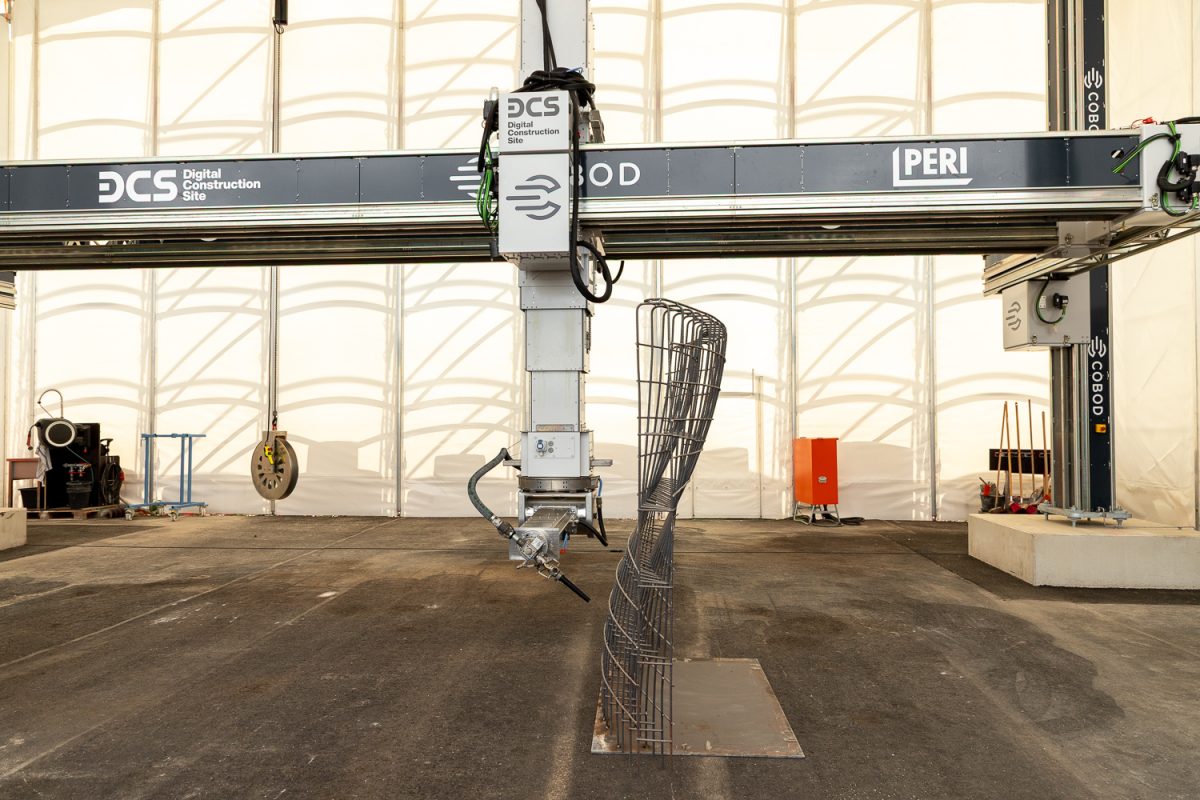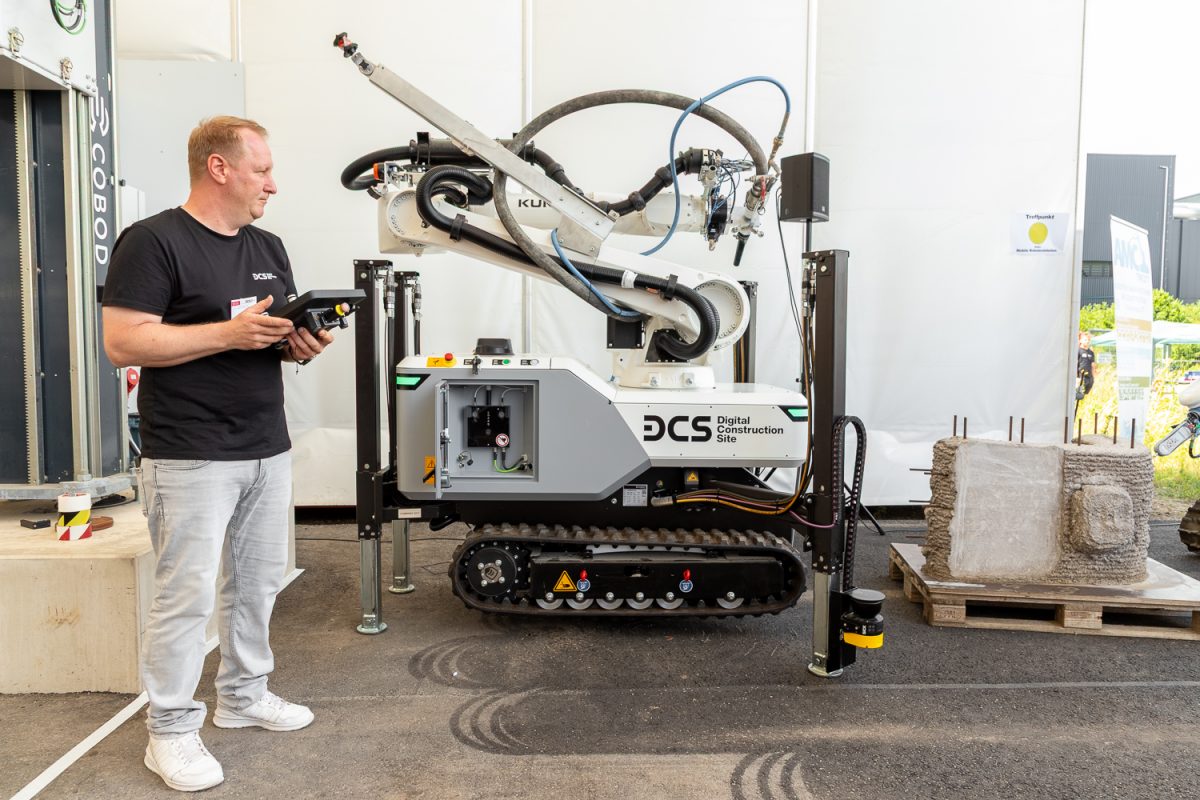Launch of the Digital Construction Site TU Braunschweig opens unique infrastructure for researching the construction site of the future
A full-scale 3D printer, an automated concrete mixing plant, mobile robots, tracking systems and a digital control centre: with the Digital Construction Site (DCS), Technische Universität Braunschweig is showing what the construction site of the future will look like. The new research infrastructure was officially opened on 3 July 2025 on the East Campus with numerous guests from science, politics and the construction industry. The aim of the project is to significantly advance digitalisation in construction and thus pave the way for a more productive and sustainable construction industry.
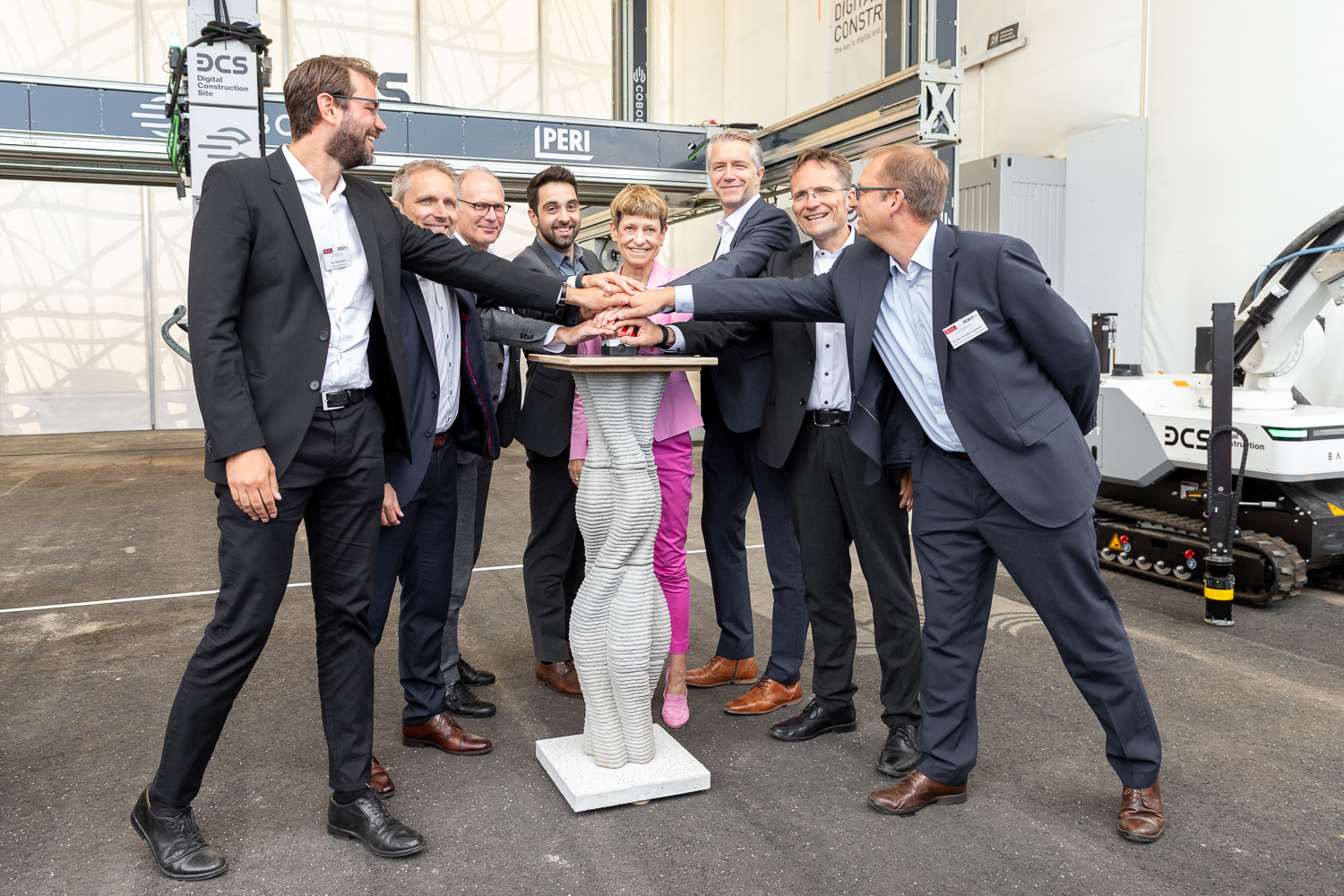
Start für die Digital Construction Site: TU-Präsidentin Angela Ittel, Dr. Neven Josipovic, CIO der Stadt Braunschweig und die am Projekt beteiligten Professoren Norman Hack, Patrick Schwerdtner, Harald Kloft, Dirk Lowke, Markus Gerke und Dr. Thorsten Leusmann (v.l.). Bildnachweis: Kristina Rottig/TU Braunschweig
A full-scale 3D printer, an automated concrete mixing plant, mobile robots, tracking systems and a digital control centre: with the Digital Construction Site (DCS), Technische Universität Braunschweig is showing what the construction site of the future will look like. The new research infrastructure was officially opened on 3 July 2025 on the East Campus with numerous guests from science, politics and the construction industry. The aim of the project is to significantly advance digitalisation in construction and thus pave the way for a more productive and sustainable construction industry.
The President of TU Braunschweig, Angela Ittel, welcomed the opening of the 2,800 square metre research area as a groundbreaking milestone: “The Digital Construction Site exemplifies our commitment to making research with social relevance visible and effective for transfer. As a university with a strong engineering profile, we are making a pioneering contribution to the sustainable transformation of the construction industry.”
Dr. Neven Josipovic, CIO of the City of Braunschweig, emphasised the importance of the Digital Construction Site for the city in his speech: “In the context of future-oriented and sustainable urban development, construction is a fundamental issue for cities and municipalities, and one that is increasingly being shaped by digital technologies. Against this backdrop, the Digital Construction Site is a valuable source of inspiration for construction practice and a dynamic place for networking between science, industry and city administration.”
“With the Digital Construction Site, we are testing digital technologies under real construction site conditions,” said Professor Patrick Schwerdtner, one of the initiators of the project. “Our goal is to make future construction processes more sustainable, efficient and safer, thereby providing significant impetus for the urgently needed transformation of the industry.”
Digital process chain from planning to implementation
The challenges in the construction industry are enormous: the growing demand for housing and infrastructure, coupled with limited resources, high CO₂ emissions and a growing shortage of skilled workers, calls for new solutions. The DCS approach is to develop and test data-based, automated processes directly on the construction site.
With a six-metre-high multifunctional 3D printing portal – a world first developed jointly by the 3D printing company COBOD and TU Braunschweig – an automated concrete mixing plant, mobile robots, object tracking systems, and a specially designed ‘Digital Engineering Centre’ with virtual and augmented reality, in which all process data is consolidated and controlled, the researchers have created a globally unique construction research infrastructure. Here, they will work with the construction industry to research end-to-end digital process chains – from planning to fabrication. This offers several advantages: construction can be more resource-efficient, interlocking digital processes shorten construction times while offering increased safety, and digital tracking systems support improved construction quality. In addition, data-based information exchange minimises communication errors.
Professor Harald Kloft, co-initiator of the project, emphasised: “The factories of the construction industry are the construction sites. The digitalisation of construction manufacturing is the key to transforming the construction industry. With the Digital Construction Site, we want to initiate the transfer between basic research and industrial application.”
Bridge between research and construction practice
After the symbolic commissioning by TU President Angela Ittel and the professors involved in the project, two short ’research insights’ provided an insight into current research topics: Professor Norman Hack spoke about the potential of 3D printing for resource-efficient construction methods in which concrete is only used where it is structurally necessary. Professor Markus Gerke presented new approaches to sensor-based quality control and measurement on construction sites: With the help of 3D measurement and tracking systems, geometric deviations, damage and construction site conditions are precisely recorded and compared with the digital planning data. At the same time, sensors analyse wind and weather conditions to take the influence of real environmental conditions into account.
Digital construction site as a test field and source of inspiration
A key concern of the scientists is to closely integrate research with construction practice. To kick off this collaboration, a panel discussion with representatives from politics, business and research took place during the opening ceremony. Helga Kühnhenrich, Head of Research and Innovation in Construction at the Federal Institute for Research on Building, Urban Affairs and Spatial Development (BBSR), Henrik Lund-Nielsen, founder and managing partner of COBOD International A/S, Maik Zutz, Technical Director North at Ed. Züblin AG, Kathrin Dörfler, Professor of Digital Fabrication at TU Munich and co-spokesperson for the DFG’s TRR 277 Additive Manufacturing in Construction collaborative research centre, and Thorsten Leusmann, Senior Engineer at iBMB/Department of Building Materials at TU Braunschweig, discussed how digital manufacturing technologies and automated construction processes can contribute to solving key challenges in the construction industry.
Regional and national companies from the construction industry are invited to continue using the Digital Construction Site as a test field and source of inspiration in the future. “Only together can we shape the urgently needed transition to a sustainable, competitive construction industry,” said Professor Schwerdtner.

